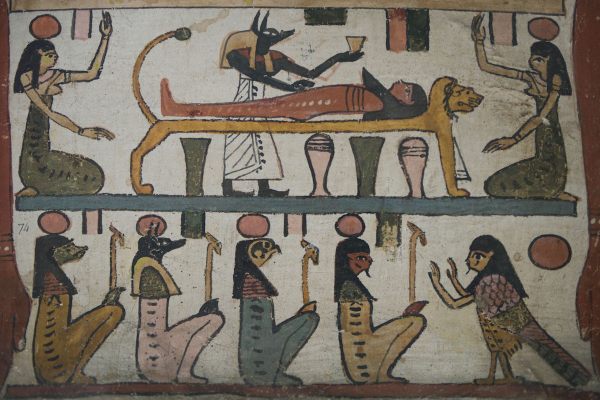Found: Two Secret Rooms in King Tut’s Tomb
After new scans, researchers are 90 percent sure they’re there.

The seal on a room of Tut’s tomb, unbroken (Photo: Harry Burton/Public domain)
Since the tomb of Tutankhamun was discovered, with its golden sarcophagus, in 1922, there’s been a lingering mystery about it. King Tut was an Egyptian pharaoh; shouldn’t his burial places have been bigger and more grand?
Some thought that he had died too young and too quickly for a better tomb to have been built. But now there’s evidence backing another possibility: his tomb is larger than it actually looks.
An analysis, by Japanese scholars, of a radar scan of the tomb indicates that there are two chambers hidden there, on the north and eastern walls. The scans show metal or organic material, and Egypt’s minister of antiquities told reporters that they’re 90 percent certain there are chambers beyond the walls.
In 2015, a British researcher, Nicolas Reeves, floated the same theory. He had not been to Tut’s tomb, but by examining high-resolution photos, he identified cracks in the wall that he thought could be secret doorways into the chambers.
Until someone actually finds these chambers, all of this evidence is somewhat circumstantial. Later in March, a more advanced scan will show more definitely if there are chambers behind those walls. And one day, maybe someone will enter them.
What will they find? Reeves believes those rooms might be the tomb of Queen Nefertiti; others are not so convinced. Until those chambers are open, no one will know for sure, and the Egyptian government won’t discuss the possibility of “how and when a team could enter,” Reuters reports, until after the new round of scans determines if there are, indeed, chambers behind the tomb’s walls.
Bonus finds: The answer to a 300-year-old math problem, a Lovecraft manuscript commissioned by Houdini
Every day, we highlight one newly found object, curiosity or wonder. Discover something amazing? Tell us about it! Send your finds to sarah.laskow@atlasobscura.com.







Follow us on Twitter to get the latest on the world's hidden wonders.
Like us on Facebook to get the latest on the world's hidden wonders.
Follow us on Twitter Like us on Facebook